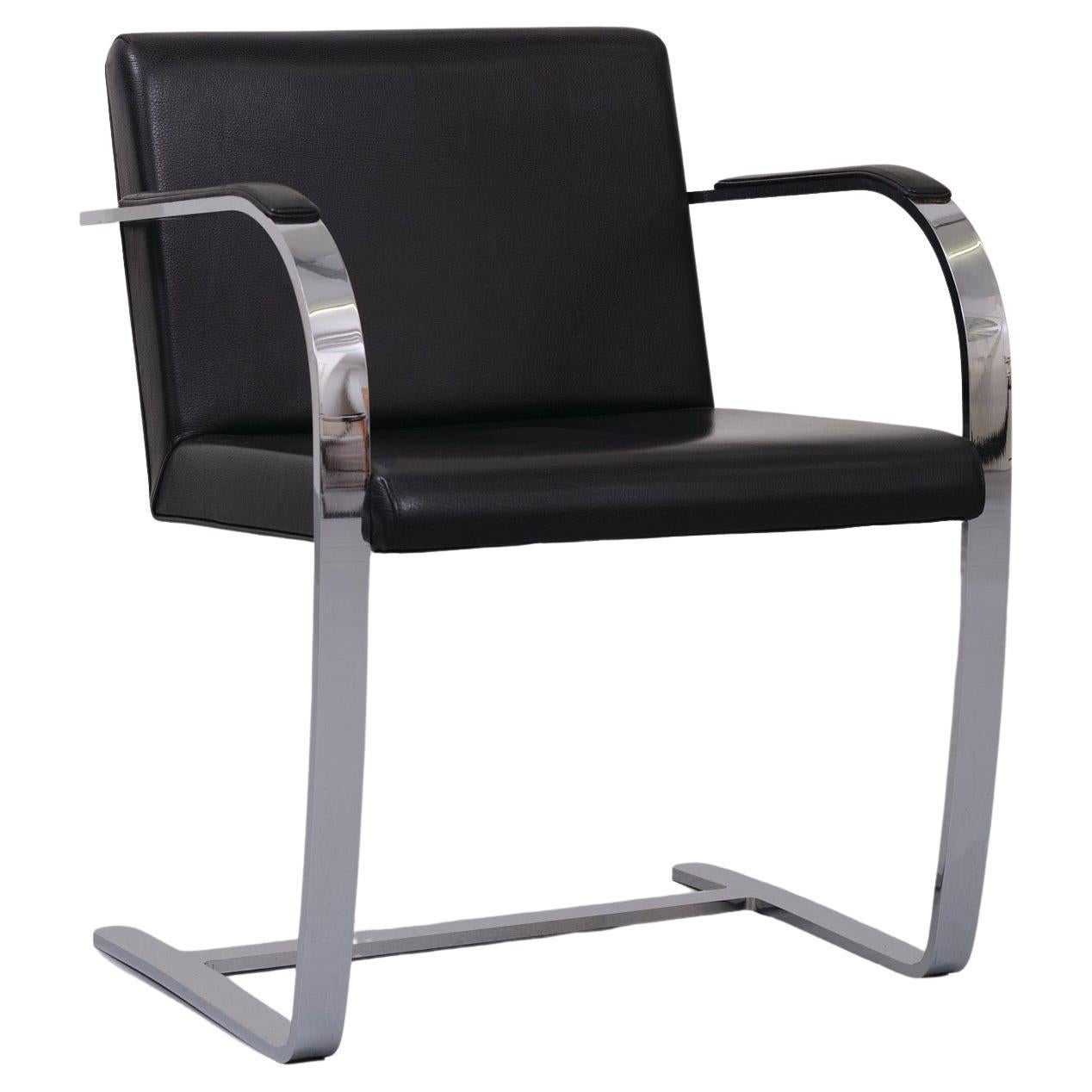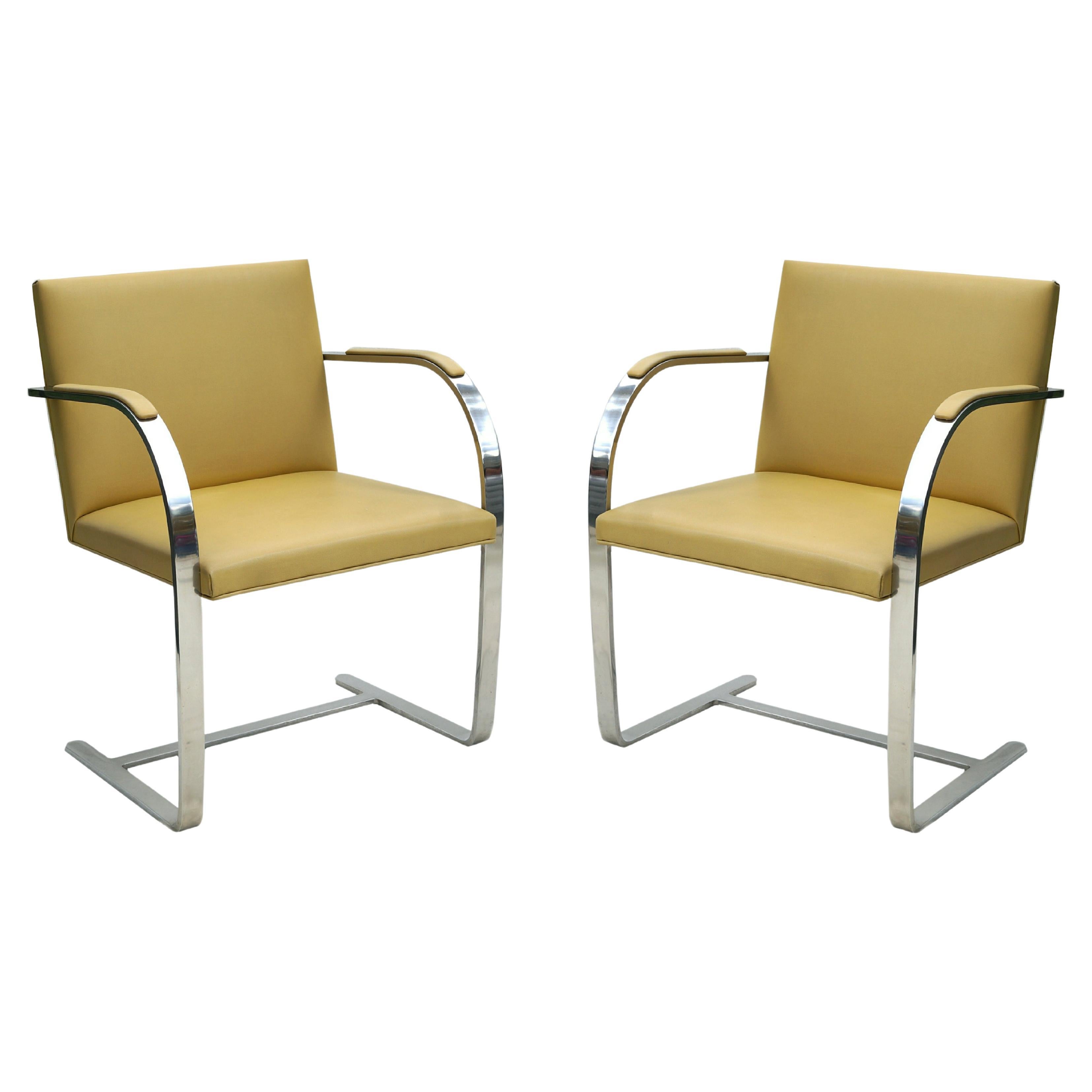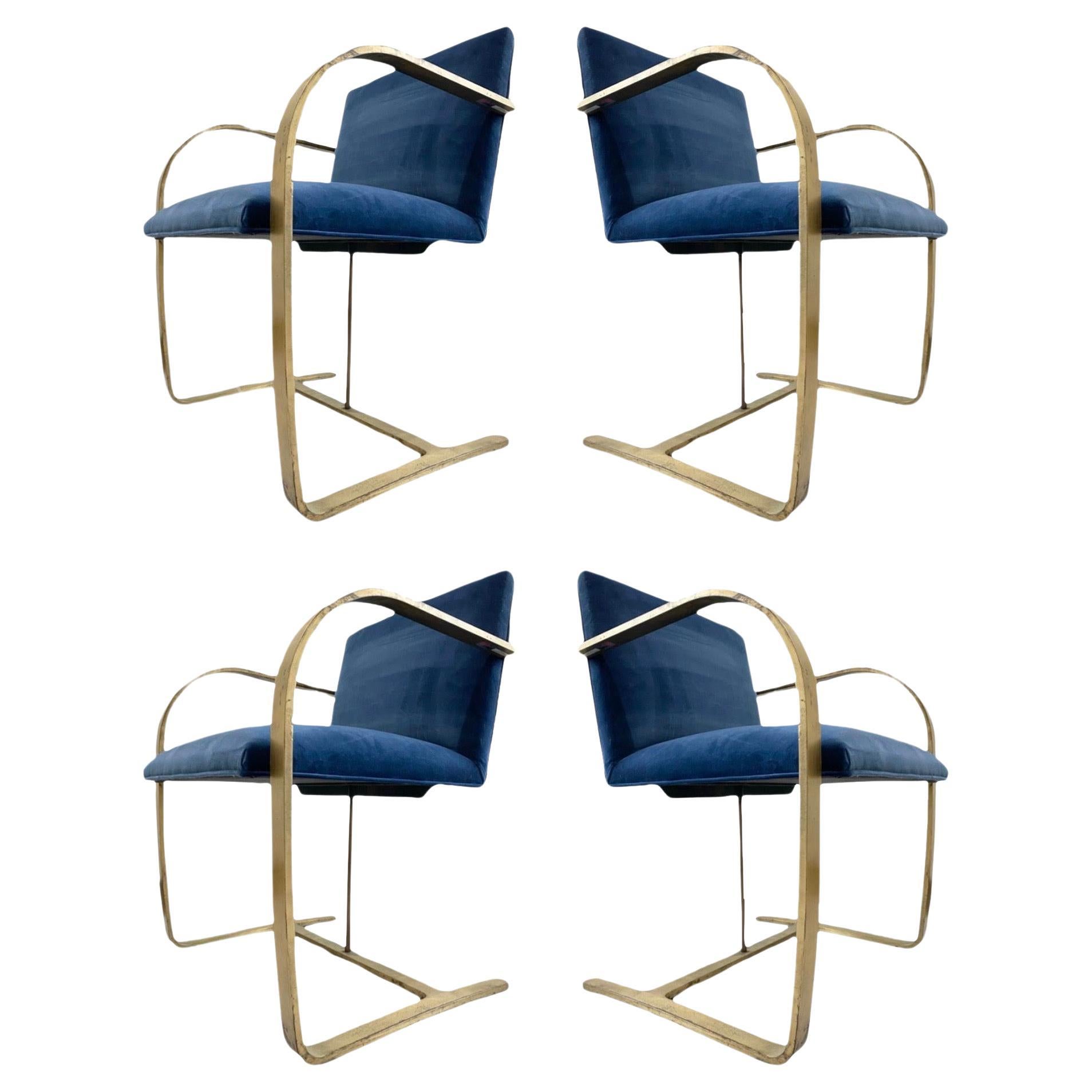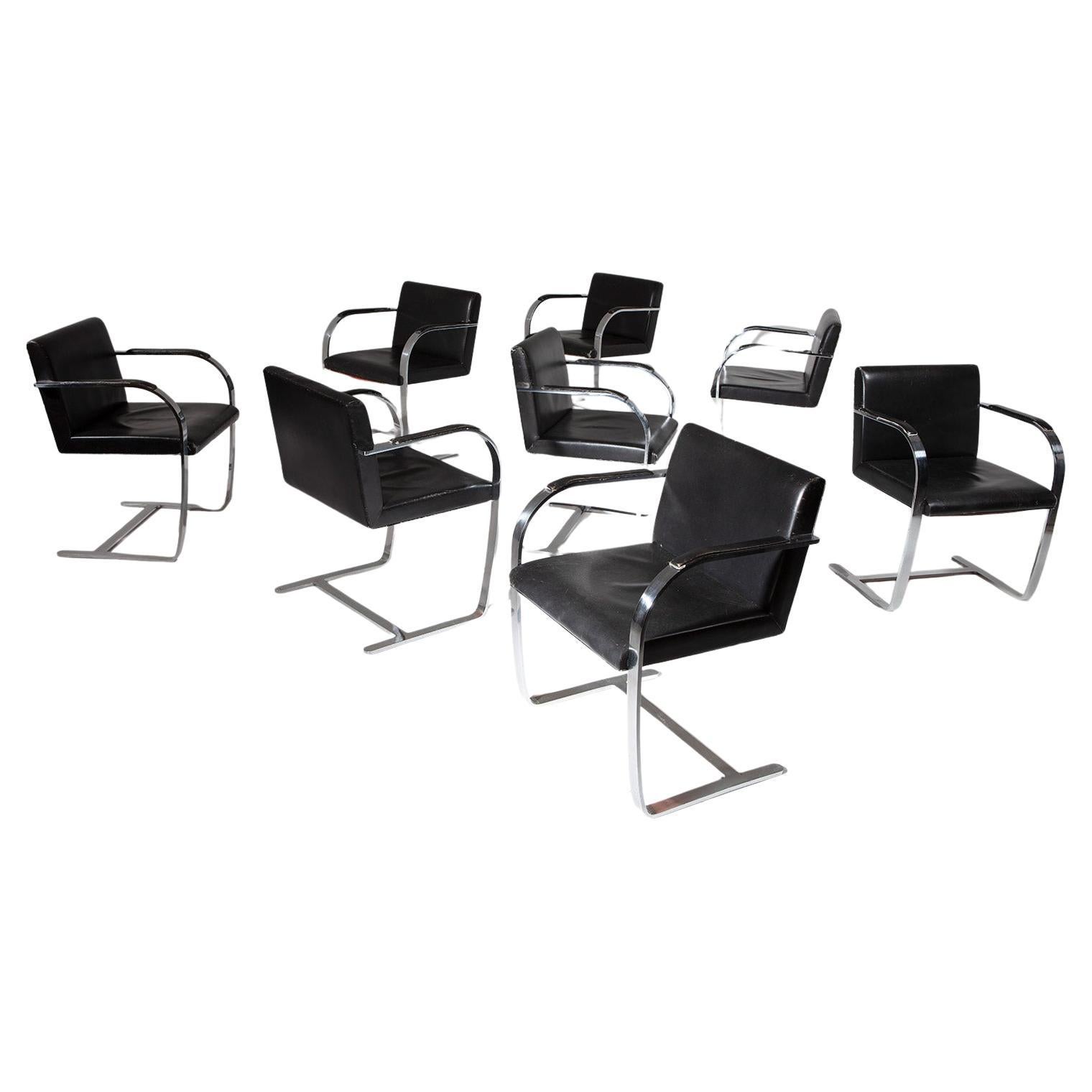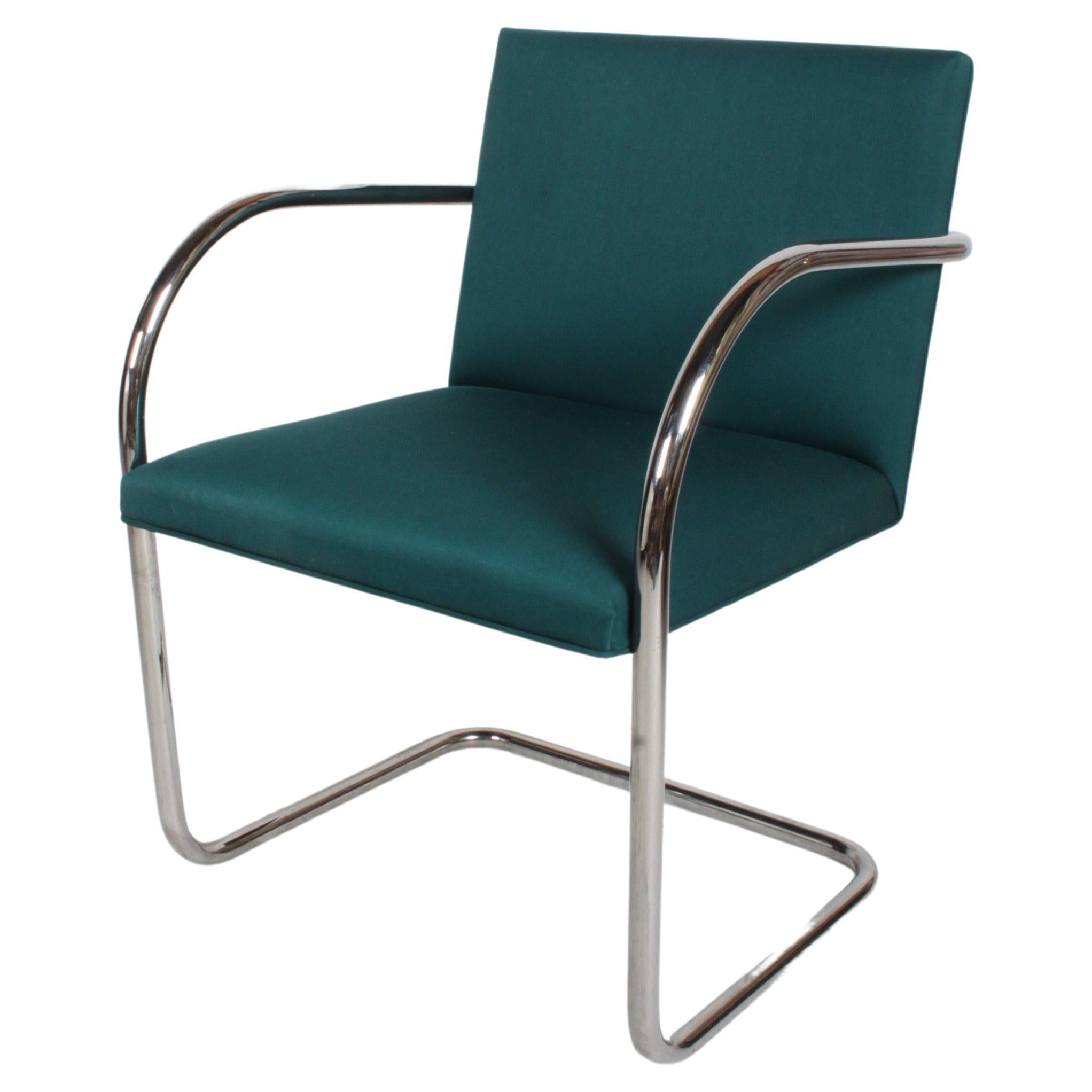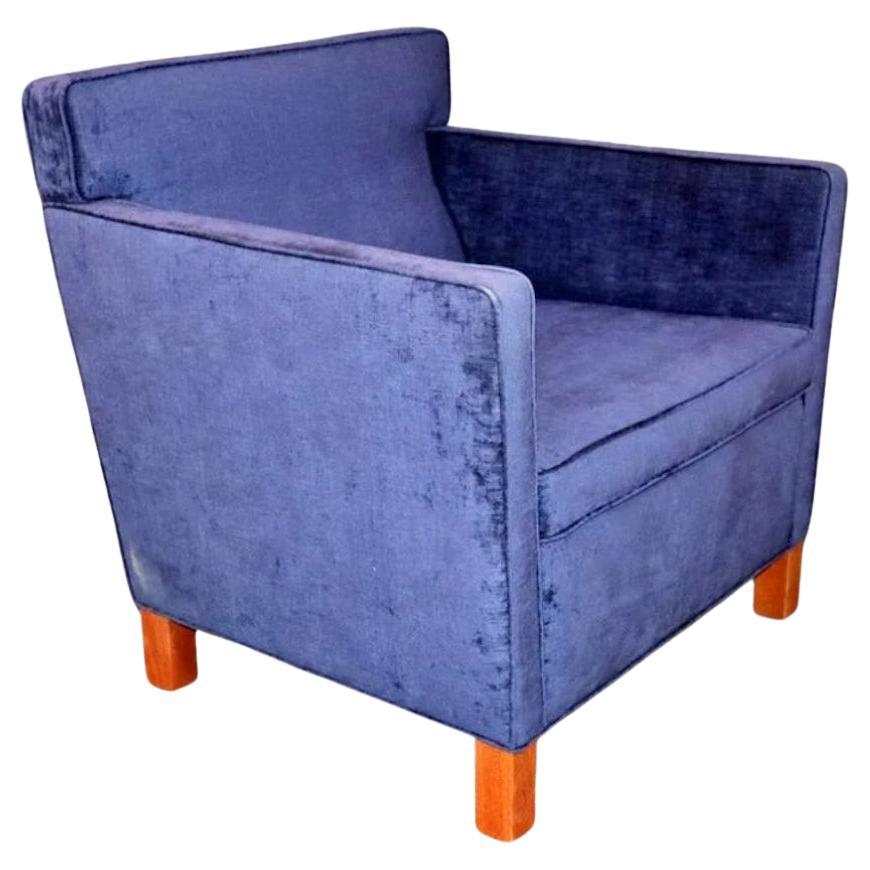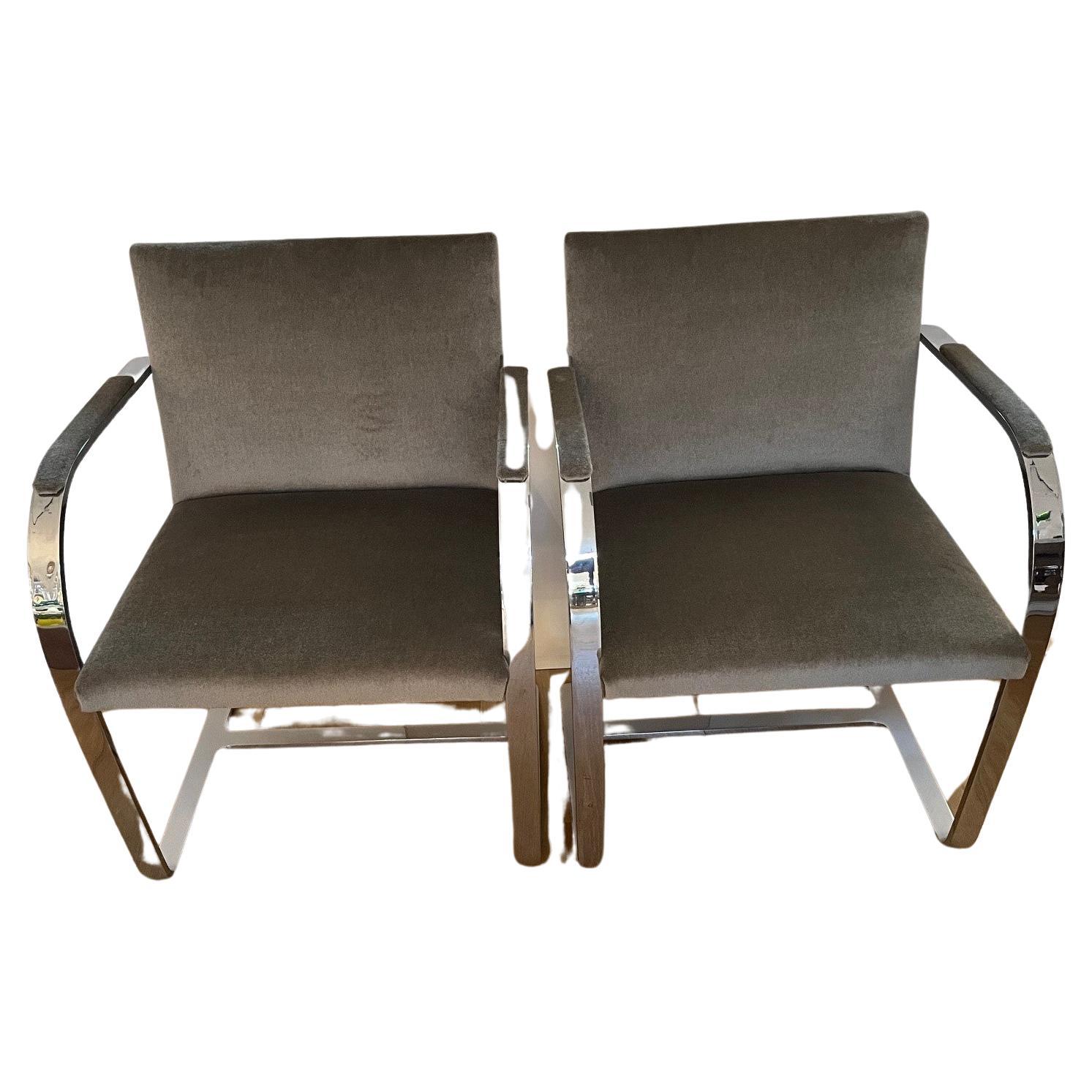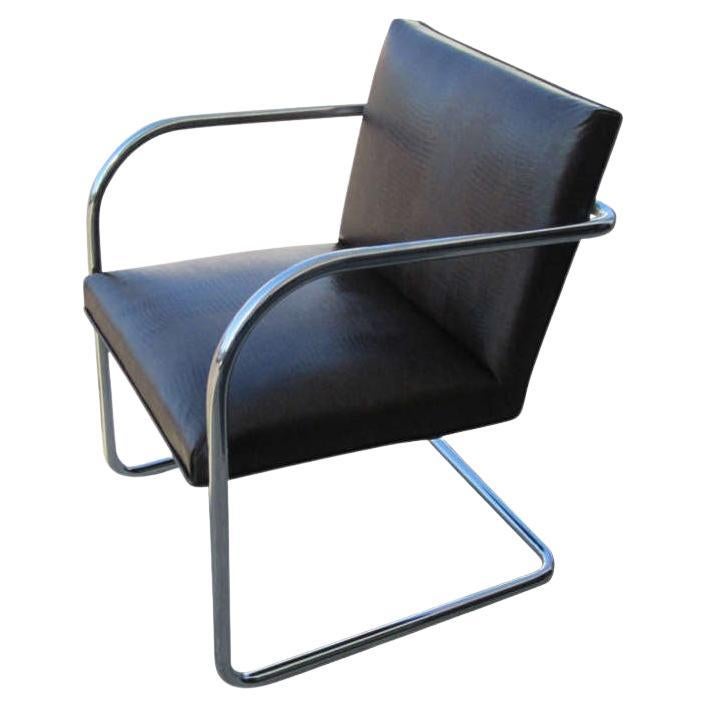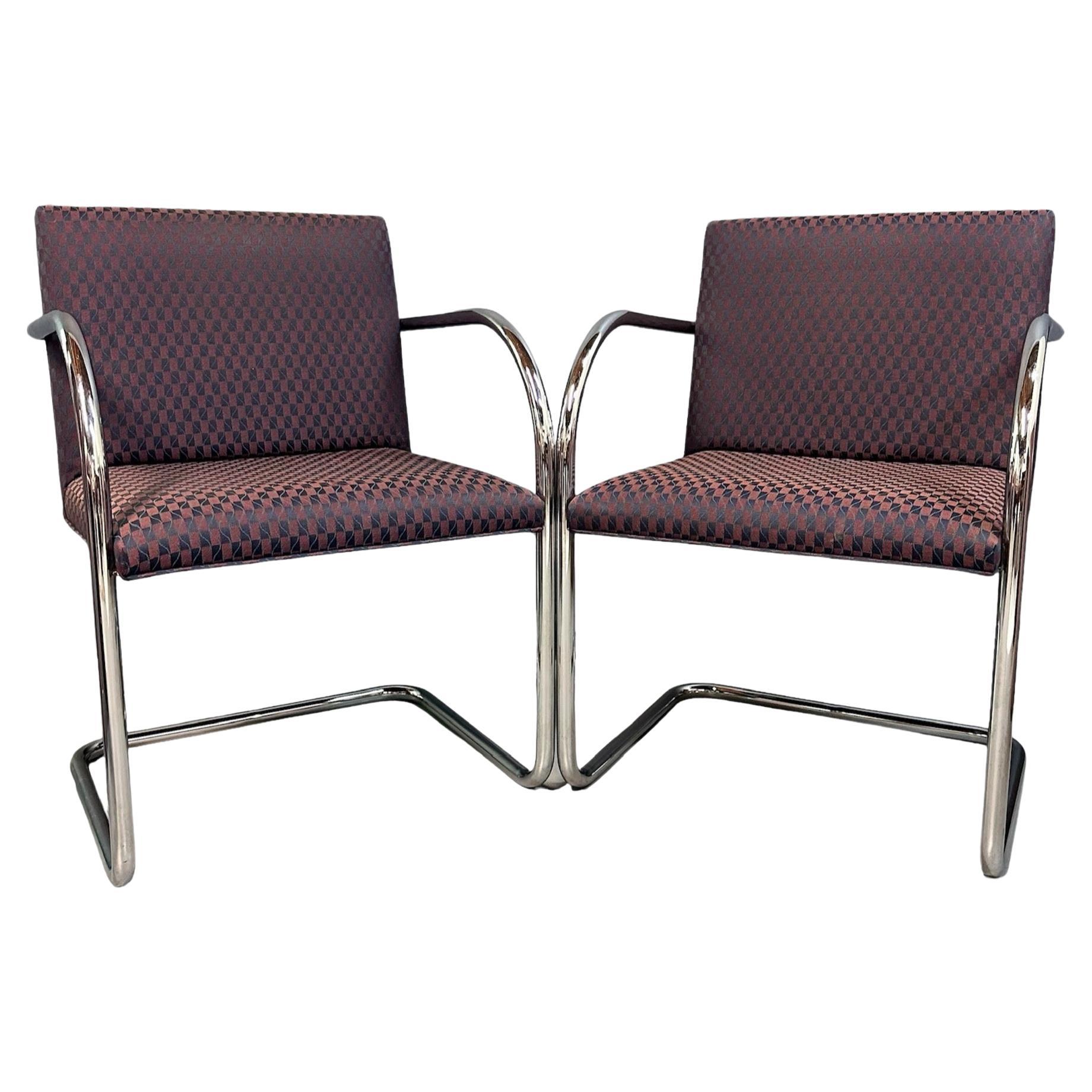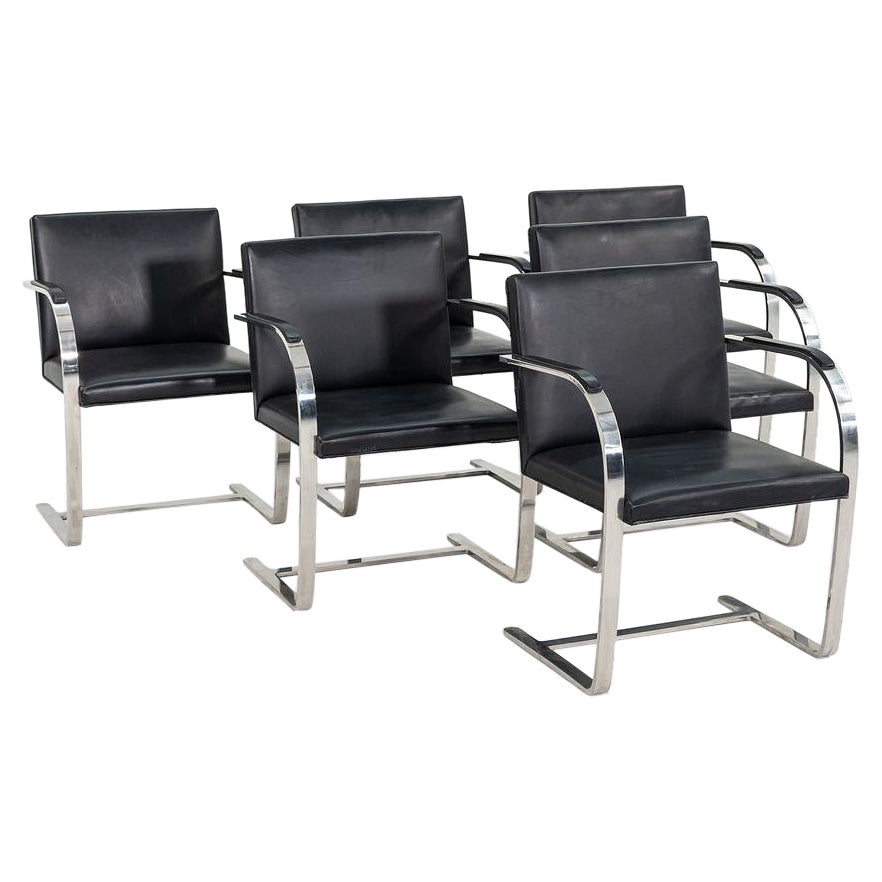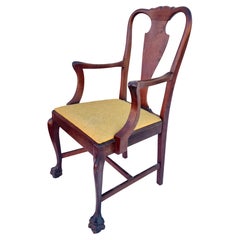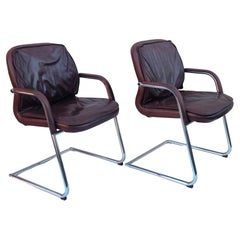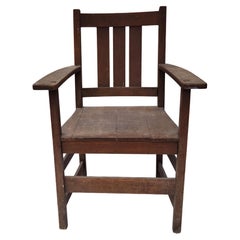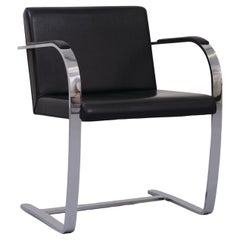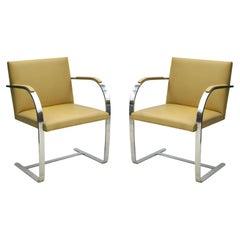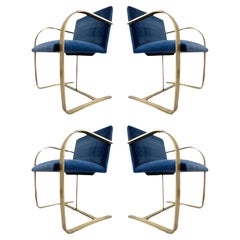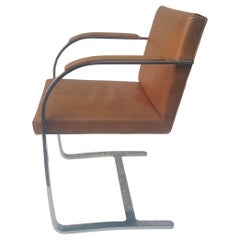
Brno Chair Ludwig Mies van der Rohe in Congac Leather Brueton
View Similar Items
Brno Chair Ludwig Mies van der Rohe in Congac Leather Brueton
About the Item
- Creator:Ludwig Mies van der Rohe (Designer),Brueton (Manufacturer)
- Dimensions:Height: 31.5 in (80.01 cm)Width: 25.75 in (65.41 cm)Depth: 22.5 in (57.15 cm)Seat Height: 18 in (45.72 cm)
- Materials and Techniques:
- Period:1980-1989
- Date of Manufacture:1980
- Condition:Wear consistent with age and use. Small scar on seat: see image.
- Seller Location:Fraser, MI
- Reference Number:1stDibs: LU6400229294652
Ludwig Mies van der Rohe
Architect, furniture designer and educator, Ludwig Mies van der Rohe was a central figure in the advancement and promotion of modernist design and architectural theory and practice. Like Frank Lloyd Wright and Le Corbusier, he was a hugely influential presence in the field, who shaped the course of 20th-century architecture both through his buildings and his teaching of rationalist design principles.
Born in the medieval German city of Aachen, Mies found an interest in architecture as a boy while working for his father, a master stonemason. He had no formal education as an architect, but learned his skills as an apprentice to the designer Bruno Paul, and as a staffer in the office the proto-modernist architect and designer Peter Behrens. Following World War I, Mies rose to prominence in his field amid the liberal atmosphere of the Weimar Republic. His reputation was secured by his work on the German Pavilion at the 1929 International Exposition in Barcelona (commonly referred to as the Barcelona Pavilion) — which Mies codesigned with Lilly Reich, his creative and romantic partner — a radically simple, poetic, open-plan building pared down to its architectural essentials. Mies would go on to direct the Bauhaus from 1930 until 1933, when Nazi-government interference forced the closure of the progressive art and design school. Later that decade, he made his way to Chicago, where he remained for the rest of his career as a practicing architect and a dean of the Illinois Institute of Technology.
Mies’s famed dictum “less is more” grew from his belief that architecture both guides and expresses the spirit of the times, and he envisioned the 20th century as open-minded, logical, transparent and liberated by technology. His best-known buildings — residences such as the Villa Tugendhat in Czechoslovakia and the Farnsworth House in rural Illinois; skyscrapers like the 860–880 Lake Shore Drive apartment towers in Chicago and the Seagram Building in New York — reflect that philosophy. As do the most famous furniture designs authored by him or codesigned with Reich.
Pieces designed by Mies and Reich such as the Barcelona chair (the authorized version is produced by Knoll today), stools and daybed, or the cantilevered Brno chairs, deliver a maximum of comfort and support from a minimum of materials: their “lavishness” derives from the precision with which they are engineered and constructed. For the collector, the allure of Mies’s furniture is at once practical and idealistic. Useful and functional, his works embody the highest aspirations of modernism.
Find vintage Mies van der Rohe chairs, tables and other furniture on 1stDibs.
Brueton
Initially known as Spanish Metal Arts — a supplier of fencing for stately homes on Long Island — the principals at New York furniture manufacturer Brueton were artistically minded from the start, ensuring that their furniture company would become a major player in the world of stylish, modern stainless steel-based design. The company’s sculptural glass-topped dining tables and vintage mid-century modern chrome-framed armchairs are welcome additions to any contemporary interior.
Brueton got its start with the Manufacturers Hanover Trust building in Manhattan. When award-winning architect Gordon Bunshaft of engineering firm Skidmore, Owings & Merrill (SOM) was designing what would become a modernist marvel in the 1950s — a structure that traded sleek glass facades for the stone columns typically associated with banks — SOM worked with Spanish Metal Arts’s Bruno Saudino and Tony Vitale to furnish the property.
For Bruno and Tony, it marked the start of the aptly named Brueton — the pair produced understated side tables and seating made of glass and aluminum for SOM’s project. Revolutionary for its time, instead of traditional narrow windows, the Manufacturers Hanover Trust building was practically transparent — allowing passers-by to see the vault from the outside. (Celebrated photographer Ezra Stoller, who chronicled iconic New York buildings like Mies van der Rohe’s Seagram Building and the soaring silhouette of Eero Saarinen’s TWA Terminal, shot the building in 1954.)
Much like the material associated with so many of its offerings, Brueton built a reputation of being a strong, dependable and polished manufacturer. The brand worked with designers such as J. Wade Beam, who created cylindrical tables of polished chrome and exquisite marble mirrors during the 1970s, as well as Massimo and Lella Vignelli, a pair of innovative polymaths who left a profound mark on design and wider visual culture.
On 1stDibs, find vintage Brueton case pieces and storage cabinets, tables and seating on 1stDibs.
More From This Seller
View AllEarly 20th Century Armchairs
Fabric, Walnut
Vintage 1980s Armchairs
Chrome
Vintage 1970s Armchairs
Fabric, Bentwood
Antique Early 1900s Armchairs
Oak
Vintage 1980s Italian Dining Room Chairs
Leather, Plaster
Vintage 1980s Dining Room Chairs
Oak
You May Also Like
Vintage 1980s Czech Mid-Century Modern Armchairs
Leather
Vintage 1970s American Mid-Century Modern Lounge Chairs
Leather
Mid-20th Century North American Mid-Century Modern Armchairs
Brass
Vintage 1970s American Armchairs
Steel
Vintage 1930s American Mid-Century Modern Armchairs
Chrome
Late 20th Century American Bauhaus Armchairs
Steel, Chrome
